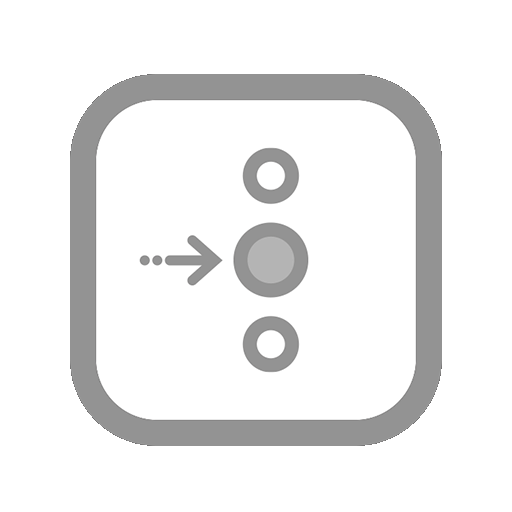Performing Nasopharyngeal and Nasotracheal Suctioning
- To clean airway of secretions.
- To facilitate breathing and improve gas exchange.
- Suction catheter sizes are adult, sizes 12 to 16 French; and pediatric, sizes 6 to 12 French.
- Limit suctioning to no more than 12 seconds to prevent hypoxia.
See Table 10.3A Suction Catheter Sizes
Relevant Nursing Diagnoses
- Impaired gas exchange related to retained secretions
General Procedure 
- Explain the procedure to the patient.
- Reduces anxiety and increases cooperation.
- Wash hands.
- Reduces transmission of microorganisms.
- Position patient in semi-Fowler's during procedure.
- Facilitates maximal breathing during procedure.
- Don nonsterile gloves.
- Reduces transmission of microorganisms.
- Turn suction on. Place finger over end of tubing attached to suction machine. Observe meter on suction head to make sure suction is working properly. Set suction to 60 mm Hg for children and 120 mm Hg for adults.
- Open sterile irrigation solution, and pour solution into sterile cup.
- Allows sterile rinsing of catheter.
- Place towel under patient's chin.
- Prevents soiling of sheets and clothes.
- Ask patient to breathe through one naris while the other is occluded, then repeat with other naris.
- Determines patency of nasal passage.
- Provide skin care to nares if indicated. Remove and discard nonsterile gloves.
- Open sterile gloves, and suction package.
- Maintains aseptic procedure.
- Don sterile glove on dominant hand.
- Maintains sterile technique.
- Hold the suction catheter in sterile hand. Grasp the suction end and the length of the tubing with the sterile hand. Attach suction control port end of the suction catheter to the tubing coming from the wall suction, which is held in the nonsterile hand.
- Maintains sterility while establishing suction.
- Remove plastic sleeve from suction catheter if there is one. Using sterile hand, grasp the suction catheter tubing closer to the fenestrated end. You can wrap tubing partially around hand. Hold suction control port end with nonsterile hand.
- Facilitates control of tubing.
- Lubricate 3 to 4 inches of catheter tip with irrigating solution.
- Prevents mucosal trauma when catheter is inserted.
- Ask patient to take several deep breaths with oxygen source before suctioning.
- Provides additional oxygen to body tissues before suctioning.
Nasopharyngeal Suctioning 
- Insert catheter into an unobstructed naris, using a slanted downward motion.
- Facilitates unrestricted insertion of catheter.
- Observe the back of the throat to see if catheter is properly positioned or coiled in the mouth. If properly positioned, place thumb over suction port to apply suction.
- Assess position.
- Applies suction to the catheter for suctioning secretions.
- Withdraw catheter in circular motion, rotating it between thumb and finger. Release suction every few seconds so that suction is on no more than a total of 10 seconds in the patient's trachea.
- Removes secretions without removing oxygen. Protects mucosa from force of suction.
- Place tip of suction catheter in sterile solution, and apply suction for 1 to 2 seconds.
- Clears secretions from tubing.
- Have patient take several deep breaths. Assess lung sounds, especially over bronchi, and determine if secretions are still obstructing the airway.
- Determines if repeat suctioning is needed.
- Repeat one more time if secretions are still present when assessed.
- Promotes adequate clearing of airway.
- Disconnect suction catheter from suction tubing, and turn off suction machine. Properly dispose of suction catheter, gloves, and other supplies.
- Prevents spread of microorganisms.
- Wash hands.
Nasotracheal Suctioning 
- Ask patient to open mouth wide as catheter is inserted.
- Allows visibility of tip of catheter.
- Insert the catheter deeper when the patient pants or coughs.
- Decreases resistance to catheter insertion.
- Place thumb over suction port.
- Provides a suction to remove secretions.
- Encourage patient to cough.
- Facilitates loosening and removal of secretions.
- Withdraw catheter in circular motion, rotating it between thumb and finger. Release suction every few seconds so that suction is on no more than a total of 10 seconds in the patient's trachea.
- Removes secretions without depleting oxygen supply.
- Place tip of suction catheter in sterile solution, and apply suction for 1 to 2 seconds.
- Clears clogged tubing after suctioning.
- Have patient take several deep breaths. Auscultate bronchial area, and assess if patient's airway is clear.
- Determines if repeated suctioning is needed.
- Repeat if secretions are still present when assessed.
- Promotes adequate clearing of airway.
- Suction the mouth and pharynx.
- Clears secretions from oral airway.
- Disconnect suction catheter from suction tubing, and turn off suction machine. Properly dispose of or store equipment.
- Prevents spread of microorganisms.
- Wash hands.
[Outline]
Evaluation and Follow-Up Activities
- Assess patient's respiratory status
- Assess for trauma, including bleeding or cuts to mucous membranes of nares and mouth
Key Points for Reporting and Recording
- Assessment before and after suctioning. Include work of breathing, frequency of cough, subjective feelings, if possible.
- Patient tolerance. Oximetry readings before and after suctioning.
- Trauma, including bleeding or tears in the mouth or nares during procedure
- Color, amount, and consistency of secretions
- Time of last suctioning
- Respiratory status
